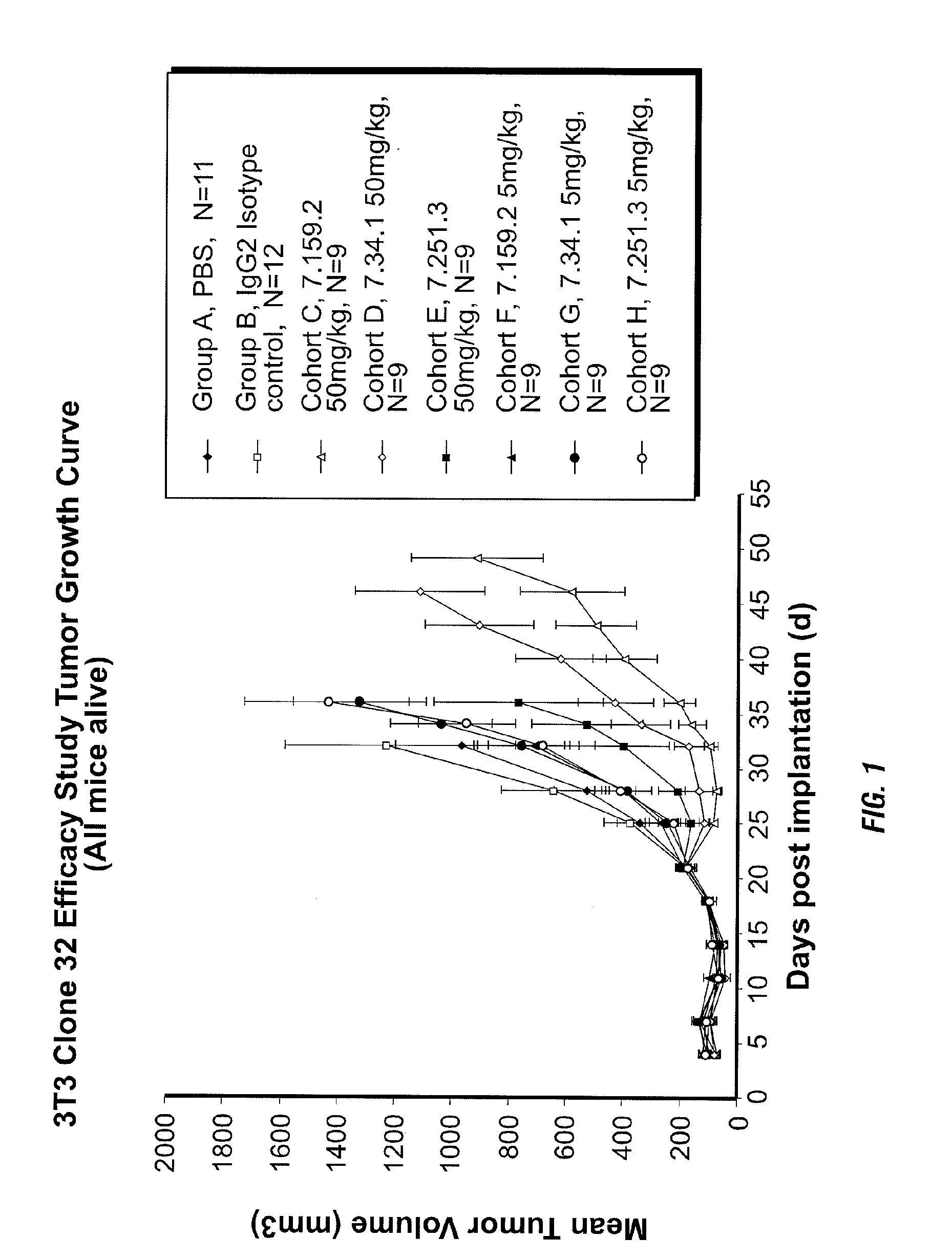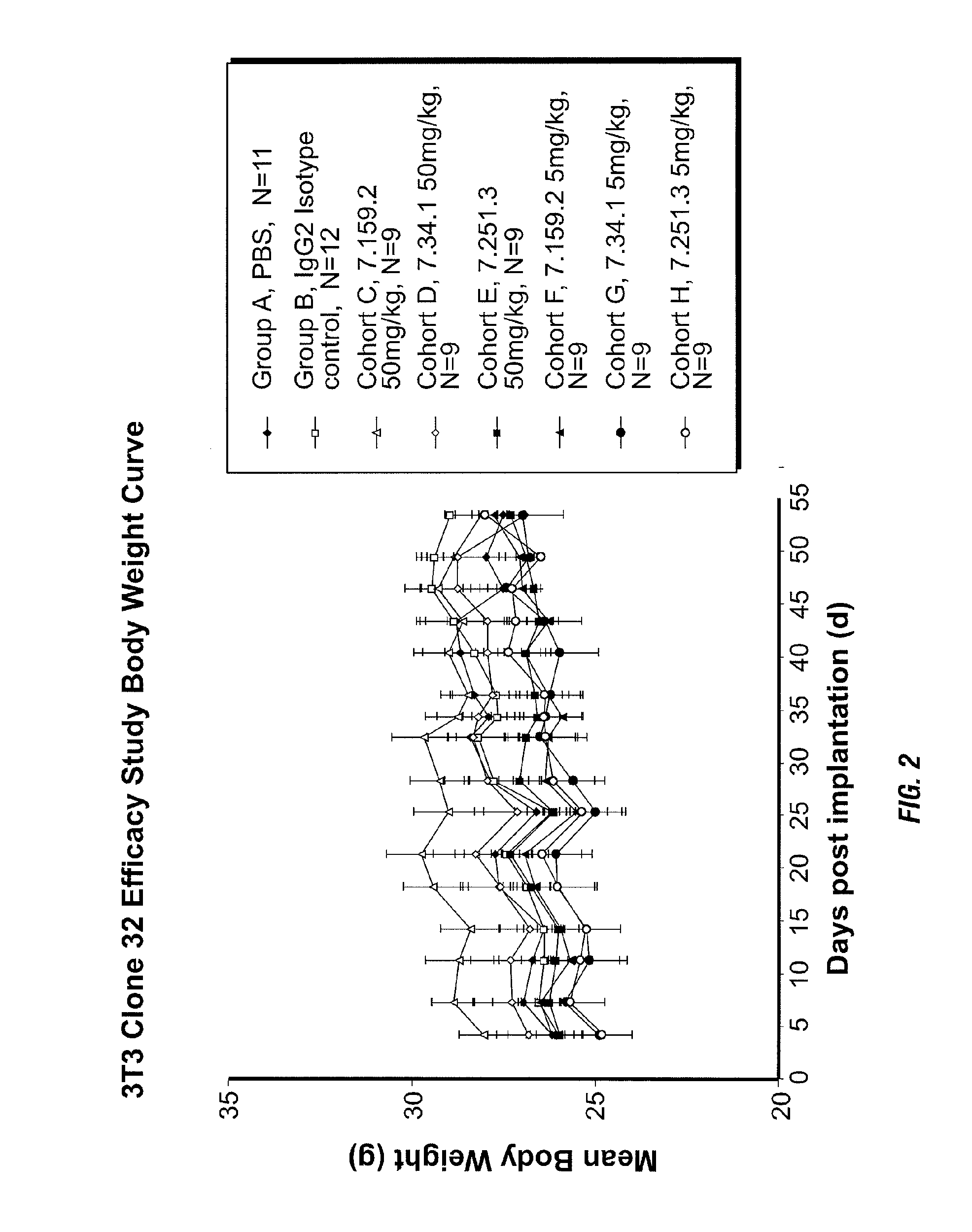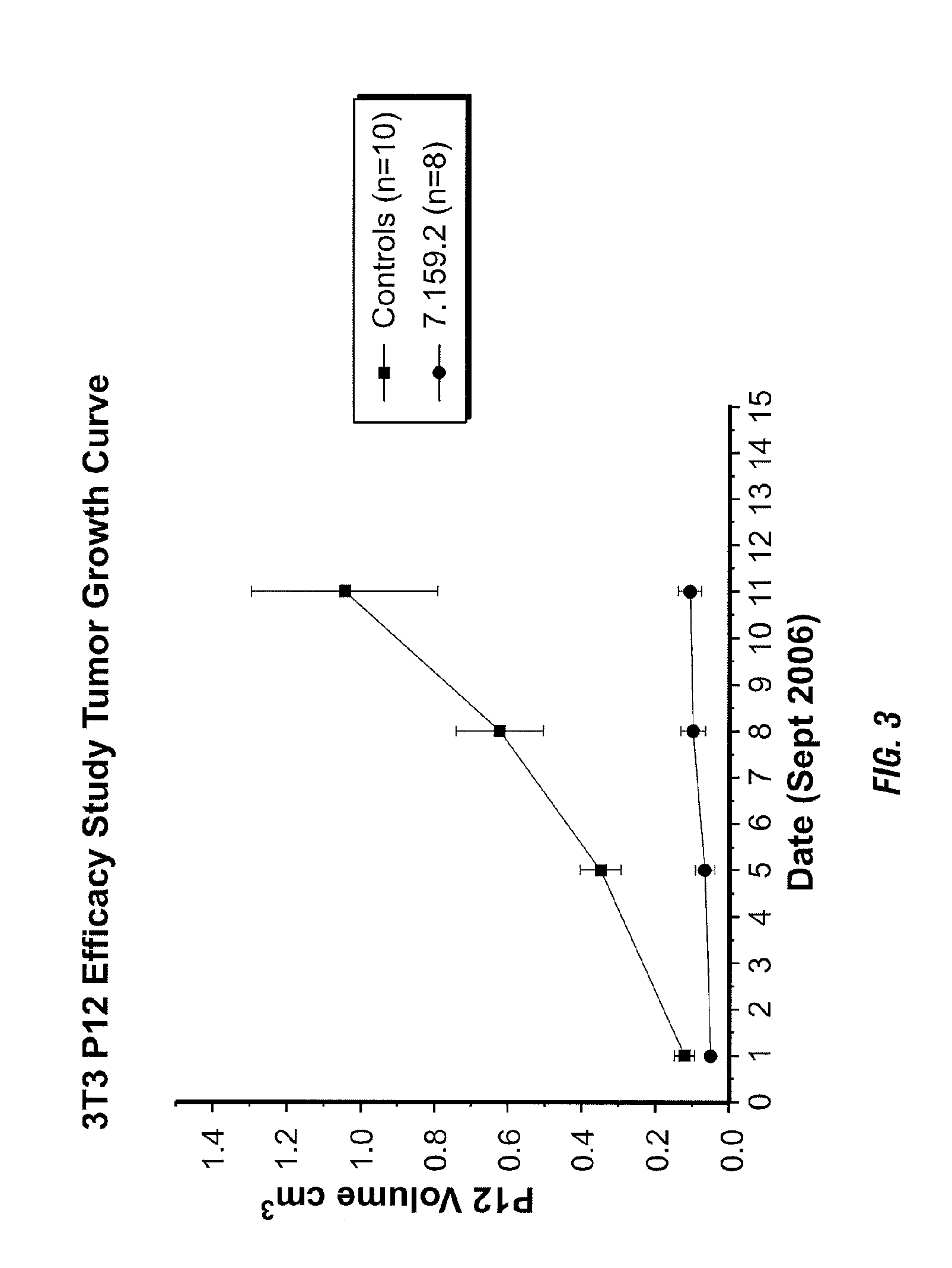Binding proteins specific for insulin-like growth factors and uses thereof
- Summary
- Abstract
- Description
- Claims
- Application Information
AI Technical Summary
Benefits of technology
Problems solved by technology
Method used
Image
Examples
example 1
[0161] Immunization and TITERING
Immunization
[0162] Recombinant human IGF-I and IGF-II obtained from R&D Systems, Inc. (Minneapolis, Minn. Cat. No. 291-G1 and 292-G2 respectively) were used as antigens. Monoclonal antibodies against IGF-I / II were developed by sequentially immunizing XenoMouse® mice (XenoMouse strains XMG2 and XMG4 (3C-1 strain), Abgenix, Inc. Fremont Calif.). XenoMouse animals were immunized via footpad route for all injections. The total volume of each injection was 50 μl per mouse, 25 μl per footpad. A total of ten (10) mice were immunized in each group. Each injection was with 10 μg per mouse of IGF-I or IGF-II alone or conjugated to Keyhole Limpet Hemocyanin (KLH) antigen as a carrier, as detailed in Table 2. The first injection was made up in Dulbecco's PBS (DPBS) and admixed 1:1 v / v with Titermax Gold Adjuvant (SIGMA Cat. #T2684, lot #K1599). A total of 8 to 11 additional boosts were then administered over a period of 27 to 38 days, admixed with 25 μg of Adj...
example 2
Recovery of Lymphocytes, B-Cell Isolations, Fusions and Generation of Hybridomas
[0163] Immunized mice were sacrificed by cervical dislocation, and the draining lymph nodes harvested and pooled from each cohort. The lymphoid cells were dissociated by grinding in DMEM to release the cells from the tissues and the cells were suspended in DMEM. The cells were counted, and 0.9 ml DMEM per 100 million lymphocytes added to the cell pellet to resuspend the cells gently but completely. Using 100 μl of CD90+ magnetic beads per 100 million cells, the cells were labeled by incubating the cells with the magnetic beads at 4° C. for 15 minutes. The magnetically labeled cell suspension containing up to 108 positive cells (or up to 2×109 total cells) was loaded onto a LS+ column and the column washed with DMEM. The total effluent was collected as the CD90-negative fraction (most of these cells were expected to be B cells).
[0164] The fusion was performed by mixing washed enriched B cells from above...
example 3
Selection of Candidate Antibodies by Elisa
[0170] After 14 days of culture, hybridoma supernatants were screened for IGF-I / II-specific monoclonal antibodies. The ELISA plates (Fisher, Cat. No. 12-565-136) were coated with 50 μl / well of human IGF-I or IGF-II (2 μg / ml) in Coating Buffer (0.1 M Carbonate Buffer, pH 9.6, NaHCO3 8.4 g / L), then incubated at 4° C. overnight. After incubation, the plates were washed with Washing Buffer (0.05% Tween 20 in PBS) 3 times. 200 μl / well Blocking Buffer (6.5% BSA, 0.1% Tween 20, 0.01% Thimerosal in 1×PBS) were added and the plates incubated at room temperature for 1 hour. After incubation, the plates were washed with Washing Buffer three times. 50 μl / well of hybridoma supernatants, and positive and negative controls were added and the plates incubated at room temperature for 2 hours.
[0171] After incubation, the plates were washed three times with Washing Buffer. 100 μl / well of detection antibody goat anti-huIgGFc-HRP (Caltag, Cat. No. H10507), was...
PUM
| Property | Measurement | Unit |
|---|---|---|
| Fraction | aaaaa | aaaaa |
| Molar density | aaaaa | aaaaa |
| Molar density | aaaaa | aaaaa |
Abstract
Description
Claims
Application Information
 Login to View More
Login to View More - R&D
- Intellectual Property
- Life Sciences
- Materials
- Tech Scout
- Unparalleled Data Quality
- Higher Quality Content
- 60% Fewer Hallucinations
Browse by: Latest US Patents, China's latest patents, Technical Efficacy Thesaurus, Application Domain, Technology Topic, Popular Technical Reports.
© 2025 PatSnap. All rights reserved.Legal|Privacy policy|Modern Slavery Act Transparency Statement|Sitemap|About US| Contact US: help@patsnap.com



